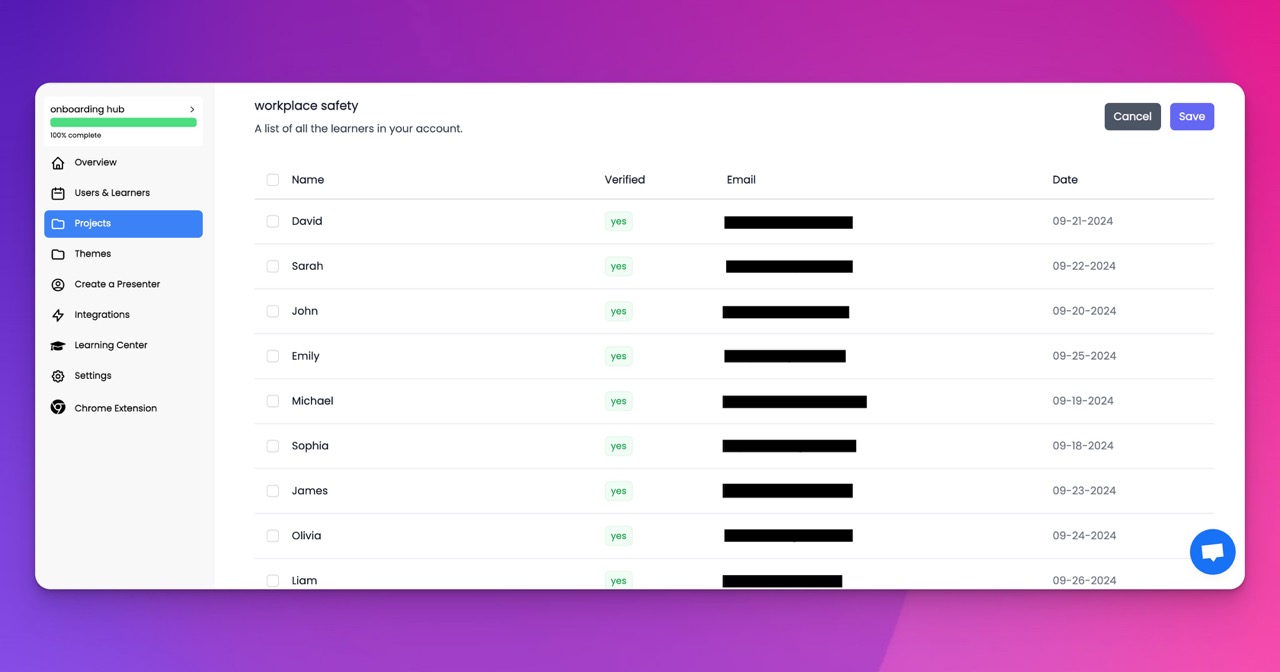🎉 Trainday now integrates with Zendesk and Hubspot 🎉 Trainday now integrates with Zendesk and Hubspot 🎉 Trainday now integrates with Zendesk and Hubspot
🎉 Trainday now integrates with Zendesk and Hubspot
🎉 Trainday now integrates with Zendesk and Hubspot
Contact
Temporary Staffing
Designing Effective Employee Training Programs for Temporary Staffing: Key Strategies
Designing Effective Employee Training Programs for Temporary Staffing: Key Strategies Leveraging Data and Artificial Intelligence
In today's fast-paced business environment, temporary staffing has become a common practice for organizations seeking flexibility and agility in managing their workforce. However, ensuring that temporary employees are equipped with the necessary skills and knowledge to contribute effectively can be a challenge. This is where designing effective employee training programs comes into play. By leveraging data and artificial intelligence (AI), organizations can create relevant training courses in record time, enabling temporary staff to quickly adapt and excel in their roles. In this blog post, we will explore key strategies for designing such training programs.
1. Utilize Data to Identify Training Needs:
Data is a powerful tool that can provide insights into the specific skills and knowledge required for temporary staff to succeed in their roles. By analyzing historical data, organizations can identify common challenges faced by temporary employees, skill gaps, and areas requiring improvement. This data-driven approach ensures that training programs are tailored to address the specific needs of temporary staff, saving time and resources.
2. Leverage AI for Course Development:
Artificial intelligence can revolutionize the process of creating training courses for temporary staff. AI-powered tools can analyze large amounts of data, identify patterns, and generate content based on established best practices. This enables organizations to develop training materials quickly and efficiently, reducing the time required for course creation. Additionally, AI can also assist in personalizing training content based on individual learner preferences, ensuring maximum engagement and knowledge retention.
3. Embrace Microlearning:
In a fast-paced environment where time is of the essence, traditional lengthy training programs may not be effective for temporary staff. Microlearning, a modern training approach that delivers bite-sized content in short bursts, is an ideal solution. By breaking down training material into smaller modules, temporary employees can access relevant information quickly and conveniently, enhancing their learning experience. Leveraging AI, organizations can develop microlearning modules that are tailored to the specific needs of temporary staff, ensuring maximum effectiveness.
4. Foster Continuous Learning:
Temporary staff often face dynamic work environments that require them to adapt quickly. To support their growth, organizations should design training programs that foster a culture of continuous learning. AI-powered learning management systems can be employed to track employee progress, recommend relevant training modules, and provide personalized feedback. By continuously updating and expanding training content based on real-time data, organizations can ensure that temporary staff have access to the latest knowledge and skills needed to succeed.
Conclusion:
Designing effective employee training programs for temporary staffing requires a strategic approach that leverages data and artificial intelligence. By utilizing historical data to identify training needs and AI-powered tools to streamline course development, organizations can create relevant training materials in record time. Incorporating microlearning and fostering a culture of continuous learning further enhances the effectiveness of these programs. By embracing these key strategies, organizations can equip their temporary staff with the necessary skills and knowledge to excel in their roles, contributing to overall business success.
Accelerate Compliance.
Deliver OSHA-Ready Courses Instantly.
Empower your team with data-driven training solutions tailored to your industry's safety standards. Stay compliant, reduce risks, and boost productivity with AI-powered course creation.
